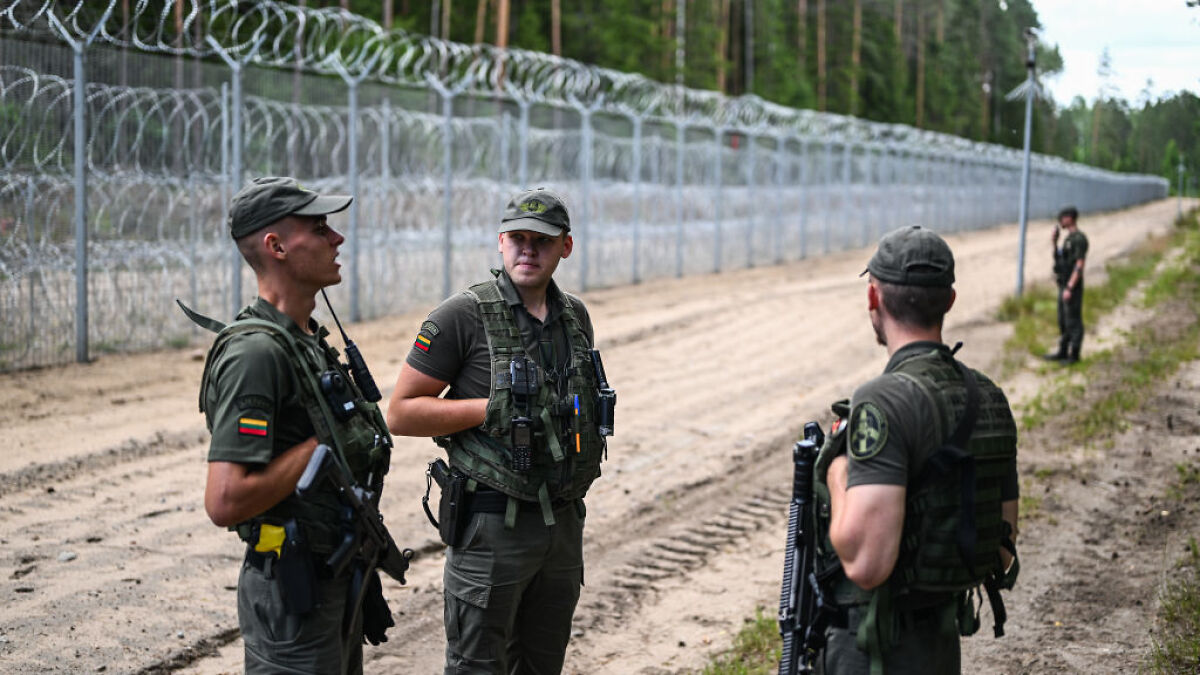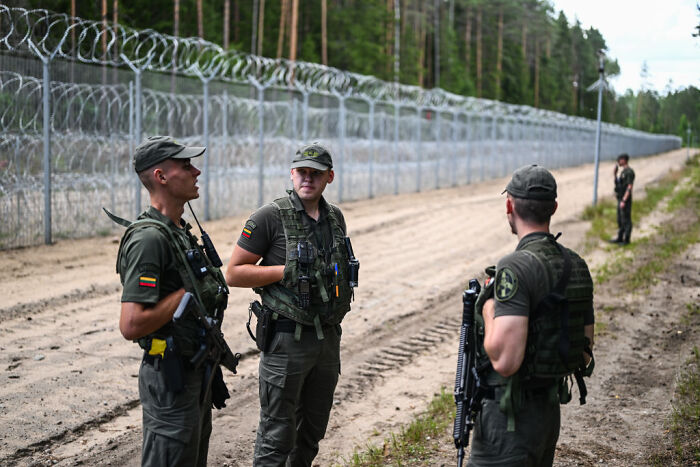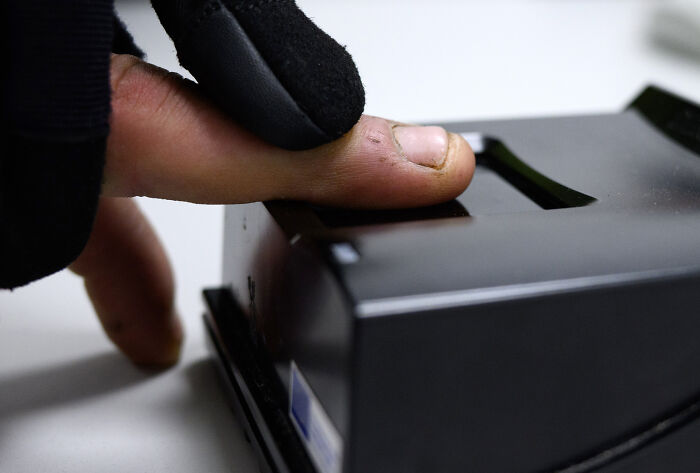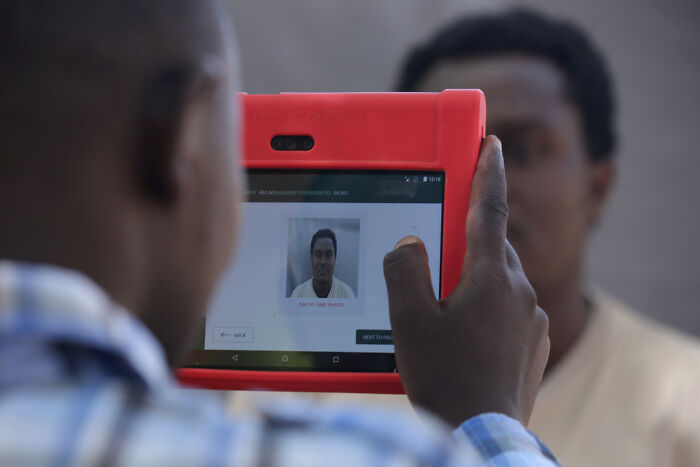When people picture a border, they still imagine fences, gates, and uniformed guards. But that’s nostalgia. The real border is now invisible. A data-based infrastructure humming quietly behind login screens and biometric scanners.
Across continents, from the Sahel to the Sonoran Desert, migration control has migrated itself from physical frontiers to digital ecosystems that decide who moves, who waits and who vanishes into a database.
- Migration control has shifted from physical borders to invisible digital systems using biometrics like fingerprints and facial recognition.
- Over 70 countries maintain biometric databases, linking humanitarian, law enforcement, and commercial cloud systems, raising privacy concerns.
- Border technologies were developed in occupied Palestine and now form the global model of digital migration control and surveillance.
The new border bureaucracy
Governments have discovered that you don’t need barbed wire if you have biometrics. Fingerprints, facial recognition, iris scans, and voice signatures have become the modern migration apparatus, and decisions about who counts as human now run on them.
According to the International Organisation for Migration, over 70 countries now maintain biometric databases for migrants, refugees or travelers. India’s Aadhaar program, initially pitched as inclusive digital identification, now doubles as a gatekeeper for services.
Border security has moved beyond fences to data. Image credits: Omar Marques/Getty Images
Kenya, Ghana, and Nigeria are rolling out similar systems tied to migration and security vetting. The EU’s Eurodac 2.0, due online in 2025, will store fingerprints and facial images of anyone applying for asylum or caught crossing irregularly as a file that can follow them for a decade.
Supporters say this modernizes migration management. Critics note that what’s being modernized is control. Once data is collected, it rarely stays put. Inter-agency “sharing agreements” link humanitarian registration systems to law-enforcement databases; commercial cloud providers host sensitive biometric archives; and companies that build refugee-management tools quietly rebrand and sell the same software to border patrols.
Who builds and who profits
A handful of firms now dominate the migration-tech supply chain. Palantir, Accenture, Thales, Idemia, Elbit Systems, and NEC have secured contracts worth billions from the EU, the UK Home Office, and the U.S. Department of Homeland Security. In Africa, smaller subsidiaries, often co-funded by development agencies, install the hardware and maintain the servers. The language of “capacity building” conceals an export industry built on surveillance.
Biometric data taken includes fingerprints. Image credits: Bernd von Jutrczenka/picture alliance via Getty Images
Investigations by Privacy International and Statewatch show that the European Commission’s Frontex has invested heavily in predictive analytics and live facial recognition trials. These tools claim to anticipate “irregular flows,” effectively turning migration forecasting into a form of algorithmic policing. When a system predicts movement, border deployments follow.
And where there’s data, there’s leakage. In 2024, a breach in an IOM-linked database exposed the biometric records of refugees in Malawi, in East Africa. The contractor allegedly responsible? A Tanzanian private equity-owned IT firm that is globally registered in Dubai.
Tested in occupation, exported to the world
Much of today’s border technology was first developed and refined in occupied Palestine. As journalist and researcher Antony Loewenstein documents in The Palestine Laboratory, Israeli defence firms such as Elbit Systems, NSO Group, and Cognyte have long tested surveillance tools, including facial recognition, predictive policing software, and biometric databases, on Palestinians under military occupation.
Much of today’s border technology was first developed and refined in occupied Palestine.Image credits: David Silverman/Getty Images
Once proven effective in that controlled environment, these systems are then exported globally: Elbit’s drones patrol the U.S.–Mexico border, EU states have purchased Israeli-made sensor and camera systems for Mediterranean surveillance that track and, critics argue, often ignore boats carrying African refugees, and spyware derived from NSO’s Pegasus platform has been used by governments from Mexico to Saudi Arabia to monitor journalists and dissidents.
In effect, technology born in an environment of permanent occupation now underpins a worldwide model of digital migration control where data, not fences, determine who moves and who is stopped. Technology incubated in occupation has become the global template for “smart borders.” What began as a military experiment is now a commercial norm: data-driven governance dressed up as efficiency.
From refugee camps to cloud dashboards
Biometric records of Rohingya refugees fleeing Myanmar were shared with its government. Image credits: Paula Bronstein/Getty Images
Aid agencies haven’t escaped this digital zeal. The World Food Programme and UNHCR have used biometric verification for food distribution and refugee registration since 2015, arguing that it reduces fraud. But humanitarian data rarely stays humanitarian. In Bangladesh, Rohingya refugees discovered their biometric records had been shared with Myanmar’s government; the very same regime they fled.
The humanitarian-security blur creates a feedback loop: the same fingerprints collected for aid can later enable deportation or further harm. Privacy International calls it the “panopticon of compassion,” which is surveillance with a smiley-face logo.
The Global South as a testing ground
The rollout pattern mirrors old hierarchies. New systems debut not in Paris or Ottawa, but in Senegal, Uganda, Jordan, or Papua New Guinea. These are states where foreign aid or security partnerships can nudge procurement without parliamentary debate.
For governments under pressure to “stop the boats,” the arrangement is irresistible: donors pay, contractors profit, and political leaders can announce modernized borders without deploying soldiers.
Algorithmic exclusion and democratic deficit
Machine-learning tools promise “risk scoring” for visa applicants and asylum seekers, ranking people by statistical probability of overstaying or posing security threats. The problem: bias travels through code.
Research from Carnegie Endowment and Oxford’s Refugee Studies Centre shows that automated systems replicate the same racial and socioeconomic assumptions baked into past border policies; just faster, and with less accountability. When an algorithm labels a traveler high-risk, there’s rarely an appeal mechanism. The decision lives in a server, not a courtroom.
The Kenyan High Court ruled parts of the country’s digital ID system unconstitutional.Image credits: Billy Mutai/SOPA Images/LightRocket via Getty Images
Civil rights groups warn that border-tech deals often bypass legislatures under the guise of “national security.” Procurement details are hidden behind nondisclosure clauses; oversight bodies lack technical capacity; data-protection laws lag years behind practice. In 2025, the Kenyan High Court ruled parts of the country’s digital ID system unconstitutional for lack of safeguards, yet rollout resumed within months, with the UK’s development arm having its hands in the neocolonial pie.
Meanwhile, the European Parliament continues to expand biometric integration across the Schengen area, while member states face lawsuits over illegal pushbacks in the Aegean. The message seems to be: rights matter, but not at the border.
Follow the money… and the human cost
The global migration-tech market is projected to hit an estimated $40 billion by 2030, driven by contracts linking security and development spending. Many of these firms also sell to defense ministries, blurring civilian and military lines. When Palantir designs refugee screening software one quarter and war planning dashboards the next, it’s clear the frontier has merged with the battle space.
Investors know it. Surveillance is the growth sector of geopolitics: recession-proof and morally flexible.
For migrants, refugees and displaced people, digital borders add another layer of opacity. A mismatched fingerprint, a corrupted file, or an algorithmic misfire can mean detention or deportation. There’s no hotline for data errors when you’re stateless.
Borders are no longer physical barriers. Image credits: Christian Torres/Anadolu via Getty Images
Civil society networks from Tunisia to Indonesia are now campaigning for “data asylum,” the right to control one’s biometric information independently of any government. It’s a novel idea: freedom not of movement, but from digital capture.
Here’s the irony. The same governments preaching about “smart migration” are the ones leaking citizen data through cybersecurity failures and outsourcing systems to contractors with opaque ownership. It’s as if we’ve replaced the passport line with a loading screen and declared it progress.
Borders, once physical barriers, are now software licenses with expiry dates. The walls didn’t fall; they just went online.













15
0